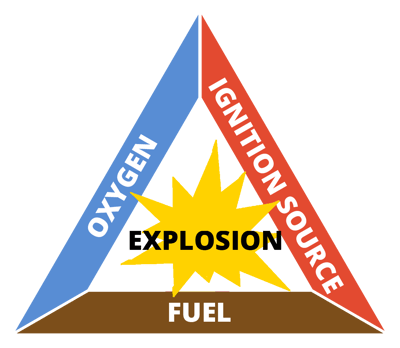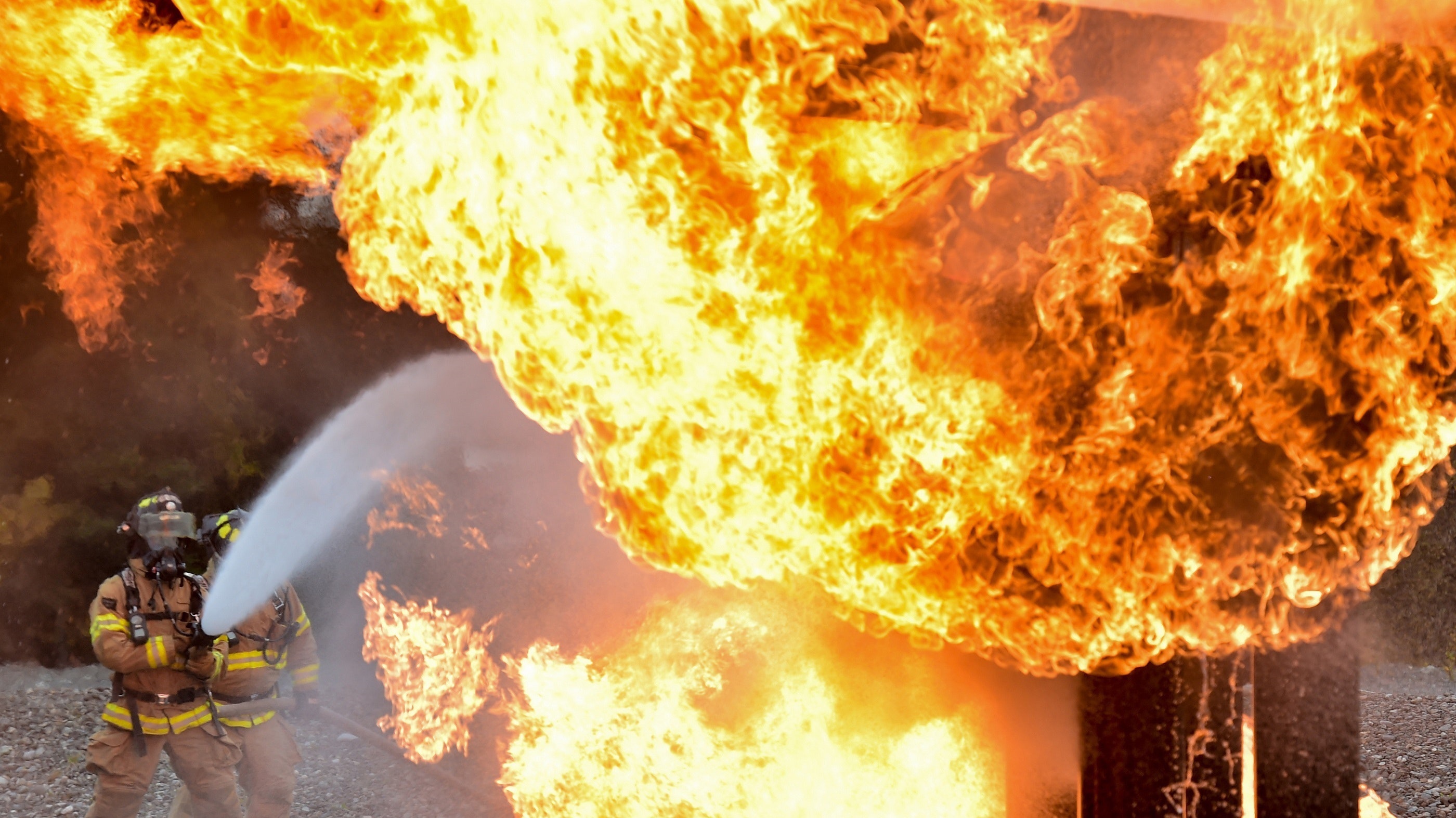When we think about explosion, our mind typically runs to oil and gas plants or ships. That’s perfectly understandable – these are some of the most explosion-prone facilities.
But you don’t have to manage an oil and gas or a munitions factory to run the risks of explosions. In fact, almost any type of factory runs this risk, even the ones in industries that are typically seen as “harmless”.
The first thing you need to understand about explosions is that they don’t happen randomly. For one to happen, certain conditions have to be met.

As the image above illustrates, you need oxygen, an ignition source and fuel for an explosion to happen. This is commonly referred to as the explosion triangle.
What happens after the spark entirely depends on your explosion management plan.
But let’s not get ahead of ourselves.
As plant manager, your primary responsibility is to prevent the formation of explosive atmospheres and, where the nature of the activity does not allow that, to make sure that the explosion never happens. For that, you need to understand that explosions have exact laws governing them (as seen above).
It may not seem like, but this is actually good news.
Since you know what triggers them, you can effectively prevent them.
ALL ORGANIC SUBSTANCES ARE EXPLOSIVE
Even though factories dealing with highly flammable products run the highest risk of explosions, other factories can also meet the necessary conditions. It sometimes takes very little for an explosion to happen.
All organic substances are explosive. Starch, coal dust, dried milk, flour, textiles, cocoa, pharmaceuticals, sugar, wood – these are just a few examples of substances that can trigger a factory explosion.
For example, dried milk has a lower explosive limit of 40 g/m3. If its concentration falls below this limit, no explosion will happen. If, on the other hand, it gets into contact with a source of ignition, you can be almost sure that an explosion would happen.
Actions like storage, filtration, drying, mechanical transport or pneumatic one can trigger explosions that happen directly in the pieces of equipment used. Unfortunately, these explosions have fatal consequences. They don’t just destroy the equipment, they also kill the workers.
How do you make sure that your facility is safe from explosions?
The first step is understanding how explosion-prone the substances you work with are. The second part is to make sure that your equipment will not create an ignition for these substances, for example through technique of intrinsic safety.
Intrinsic safety entails a low power design that ensures there is not enough power through your circuits to trigger an explosion.
The other common safety method uses explosion-proof enclosures. Despite the name, this method does allow for the explosion to happen. It simply restricts it to a well-defined area.
Ideally, you should be relying on intrinsic safety devices – no explosion is always better than a contained explosion. However, if you need high-power tools, intrinsic safety may not be an option.
Another step you can take to ensure the protection of your facility is using protective systems, for example redirecting the explosion. This method is used when, for different reasons, prevention of explosive atmospheres and avoidance of ignition are not possible. It essentially consists of using an anti-explosion pipeline that “guides” the explosion to a safe zone.
In other cases, you will need to use a high rate discharge (HRD) system that is able to detect the onset of the explosion and perform quick extinguishing of the protected space and “eject” the explosion elsewhere.
Typically, these explosion detectors can react as fast as two milliseconds after certain values are exceeded. This way, the explosion is caught in its very incipient stage and the damages are minimal.


